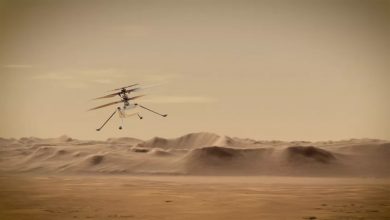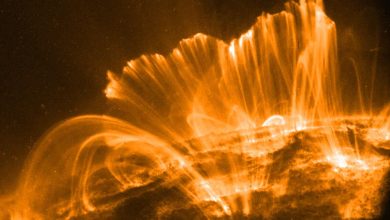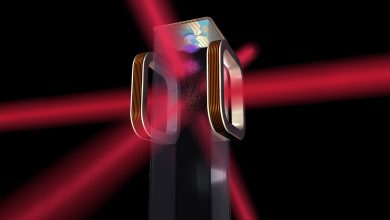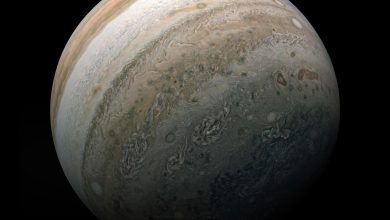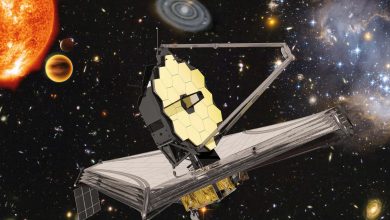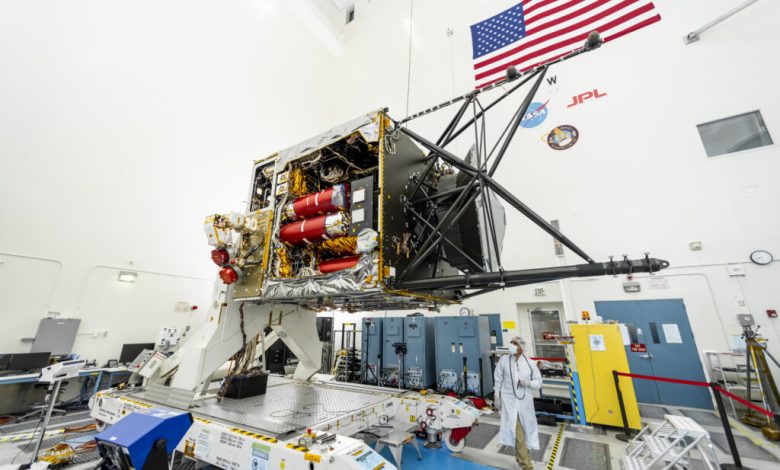
Lead Image: NASA’s Psyche spacecraft during system integration at JPL. Credit: NASA/JPL-Caltech
As 2022 begins, the ASU (Arizona State University)-led team for the NASA Psyche spacecraft is preparing to conduct thermal vacuum testing in preparation for launch. Psyche is a first-of-a-kind mission set to orbit an M-Type asteroid, scheduled to launch on a SpaceX Falcon Heavy booster this August.
Following a three-and-a-half-year transit through the inner solar system, Psyche will enter into orbit of the main asteroid belt object, 16 Psyche. Its sister mission, Lucy, is continuing to its first flyby on Earth despite a solar array issue; both missions operate under NASA’s Discovery program.
Psyche overview:
Psyche was selected as a finalist in 2015 to be a part of the Discovery program. In January 2017, it was selected as the 14th mission in the program. At the same time, Lucy was selected for the 13th Discovery mission.
After being selected by NASA, the Psyche team began finalizing the design of the spacecraft and mission. The team finished the preliminary design of the spacecraft in March 2019, and NASA approved the design in May 2019; this allowed the team to begin spacecraft and instrument construction.
The Psyche spacecraft is based around Maxar’s 1300-class spacecraft platform. The 1300 platform is Maxar’s offering for a proven modular satellite bus for operations mainly in GEO (Geostationary orbit). Since its introduction, the 1300 platform has been used on multiple missions including NASA’s OSAM-1 (On-Orbit Servicing, Assembly, and Manufacturing) and NOAA’s third generation of GOES weather satellites.
Psyche is the first spacecraft based on the 1300 satellite bus to conduct an interplanetary mission.
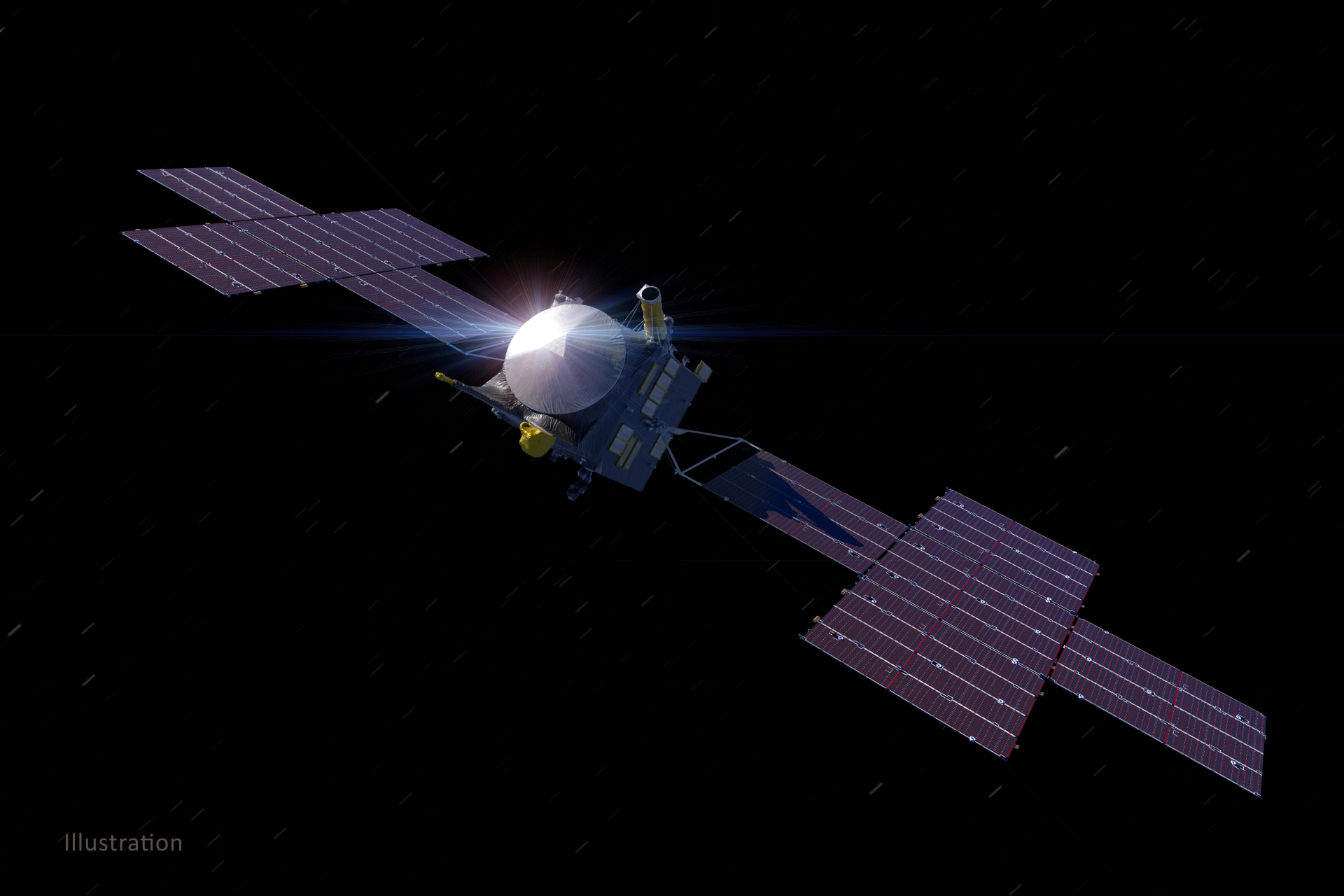
The spacecraft bus will be 3.1 meters long by 2.4 meters wide. When fully deployed, the spacecraft will be 24.76 meters long by 7.34 meters wide–about the same size as a tennis court. Twin medium-size solar arrays will be used to power the spacecraft.
A set of seven instruments will be used to conduct science at 16 Psyche.
An X-band antenna will also be used to measure different parts of 16 Psyche. Along with topography derived from the onboard imagery taken from the spacecraft, the teams will use this data to find the interior structure and the gravity field of 16 Psyche. The team working on radio science is based at MIT (Massachusetts Institute of Technology) and NASA’s JPL (Jet Propulsion Laboratory).
The initial orbit of Psyche will use the X-band antenna along with the DSN (Deep Space Network) to use radio waves to study the gravity field, mass, rotation, orientation, and wobble of Psyche. One of the largest mysteries of 16 Psyche is the shape of it, as it appears to be lumpy and wider on one side. Studying the gravity field will solve the mystery of why 16 Psyche is shaped the way it is.
An experimental laser communications system called DSOC (Deep Space Optical Communications) will also be used to communicate with Earth. The DSOC is a new technology that uses photons from light to communicate instead of the normal radio waves. Light photons will allow more opportunities to communicate more data given the limited time with the spacecraft and ground. DSOC will be provided by JPL.
To provide imagery, Psyche will use a multispectral imager instrument. The imager will consist of a pair of identical cameras. The cameras will use filters to find the differences between the metallic and silicate constituents of 16 Psyche. The second camera is used to provide redundancy for mission-critical optical navigation. While in orbit, the cameras will acquire geologic, compositional, and topographic data. The team working on the imager is based at ASU.
To support another set of instruments, a pair of two-meter booms will be placed on top of the spacecraft. The booms are used to create distance between the sensors and from the background radiation created by the spacecraft as energetic particles react. It will also allow an unobstructed field of view.
A Gamma Ray and a Neutron spectrometer will be placed on one of the booms to detect, measure, and map 16 Psyche’s elemental composition. These are provided by the APL (Applied Physics Laboratory) at Johns Hopkins University.
Here we go!☄️🛰The #PsycheMission’s GRNS flight hardware has left @JHUAPL, headed for @NASAJPL where it'll go through final tests before heading to space. It will characterize the elemental composition of the asteroid Psyche – & help reveal if it’s the shard of a planetary core. pic.twitter.com/hFns0ocoZV
— Thomas Zurbuchen (@Dr_ThomasZ) August 4, 2021
A Magnetometer will be placed on the middle and outer end of the second boom. This instrument will consist of two identical high-sensitivity magnetic field sensors to detect and measure the remnant magnetic field of 16 Psyche. The instrument is provided by MIT and the DTU (Technical University of Denmark).
The Maxar 1300 bus used on this mission is based on the SEP (Solar Electric Propulsion) Chassis, the lightest and smallest graphite bus for the 1300 bus. The bus was delivered to JPL in March 2021. The delivery allowed JPL to begin the final assembly and testing of the Psyche spacecraft.
By the one-year mark to launch, all the instruments but the spectrometer and imager were integrated with the spacecraft. In September 2021, the spectrometers were delivered from APL to be installed.
With all of the instruments installed on the spacecraft, Psyche began a series of pre-launch testing. At JPL, Psyche was placed in a thermal vacuum chamber. A thermal vacuum chamber is used to simulate the environment of deep space.
Psyche will be tested in the chamber for several weeks. Once it passes through this testing, it will undergo vibration testing on a shaker table while in an acoustic chamber. This is similar to what Psyche will go through during launch.
The final testing will include electromagnetic interference and electromagnetic compatibility testing. Once the testing is completed, the Psyche team will conduct the Operations Readiness Review to ensure all the teams are ready for launch and delivery. After that is complete, the team will conduct the Key Decision Point E. This decision point determines the readiness of the team and spacecraft for post-launch operations.
In May 2022, the spacecraft will then be packed and shipped for final preparations at KSC (Kennedy Space Center). The spacecraft will then be re-checked and loaded up with its propellant for launch. From there, it will be attached to SpaceX’s Falcon Heavy’s payload adapter and encapsulated in its 5.2-meter diameter payload fairing.
Once encapsulated, the payload will be attached to the Falcon Heavy and rolled to the launch site at LC-39A (Launch Complex 39A). Launch is current scheduled for NET (no-earlier-than) August 1, 2022; a liftoff on that day would be planned around 2 PM EDT (18:00 UTC).

Shortly after launch, the Falcon Heavy’s two side boosters will attempt to land, likely at Landing Zone 1 and 2 after returning to the Cape Canaveral launch site. These side boosters are planned to be reused and expended on NASA’s Europa Clipper mission in October 2024. The Center Core will likely attempt to land on one of SpaceX’s Droneships in the Atlantic Ocean.
Psyche’s mission:
The Falcon Heavy will place Psyche on a trajectory towards a fly-by of Mars for a gravity assist. The Mars gravity assist will take place in May 2023 with the spacecraft passing around 500 km away from the Martian surface.
To provide propulsion to the spacecraft, Psyche will use a set of SPT-140 (Stationary Plasma Thruster) SEP (Solar Electric Propulsion) thrusters. The use of SEP thrusters will allow Psyche to propel itself more than conventional chemical thrusters while using less fuel.
Using the SPT-140 thrusters, the spacecraft will reach 16 Psyche on January 31, 2026, where it will reach orbit around the asteroid. Once in orbit, Psyche will begin its first of four orbit phases to study 16 Psyche.
The first phase, known as “Orbit A,” is at the highest altitude of 700 km. This orbit is the initial orbit to begin general characteristics studies of 16 Psyche. Psyche will remain in this orbit for 56 days or 41 orbits.
Following the time at Orbit A, Psyche will then use its thrusters to get closer to the surface throughout a 21-month observation period. Getting close to the surface will allow for more accurate and higher resolution observations of Psyche.
After a series of orbit lowerings, Psyche will begin “Orbit B,” which is an altitude of 290 km. Orbit B allows for the topography of the surface of 16 Psyche. Psyche will remain in Orbit B for 80 days or 169 orbits.
The next series of orbit lowerings will place Psyche in an orbit of 170 km for “Orbit C.” Orbit C’s main focus is on Gravity Science at 16 Psyche. Operations at Orbit C will last 100 days or 362 orbits.
The last planned operational orbit is “Orbit D” at the lowest altitude of 85 km. Compared to the other orbits, Orbit D will be in a polar orbit–unlike the retrograde orbit of the other phases. Orbit D will focus on elemental mapping of 16 Psyche.
The operations in Orbit D will last 100 days or 684 orbits. After this point, Psyche’s primary mission ends. Pending the health of the spacecraft, Psyche can continue its mission for even longer operations studying the asteroid.
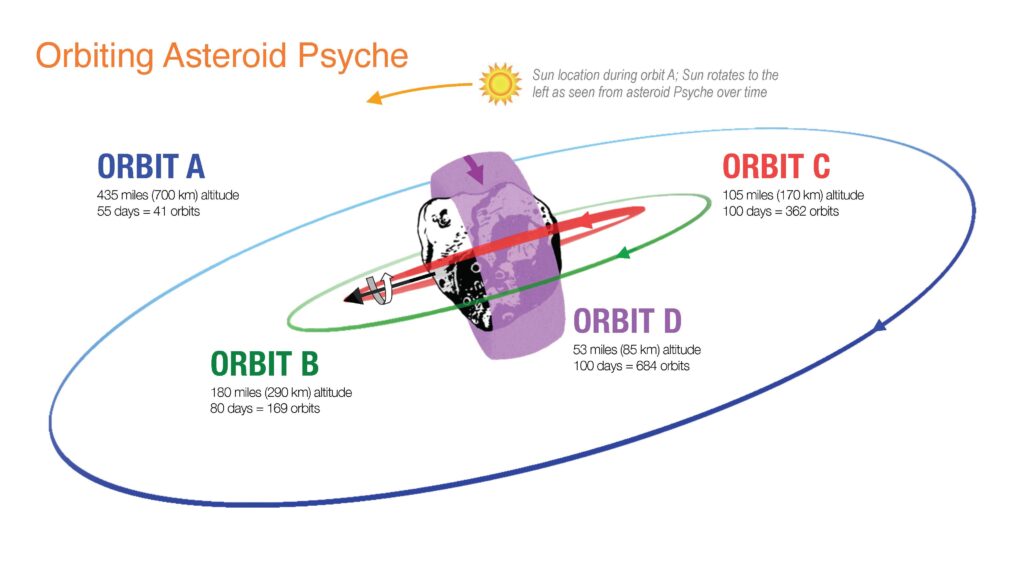
As an M-Type asteroid, the composition of the asteroid is mainly metal. 16 Psyche is the 16th asteroid ever discovered. It was found by Italian Astronomer Annibale de Gasparis in 1852. Named after the goddess of Soul in Greek Mythology, it is the largest M-Type asteroid ever discovered.
16 Psyche is currently in an orbit on average of 3 AU (Astronomical Units), whereas Earth orbits at 1 AU. A day lasts four hours and 12 minutes, with a year lasting 5-Earth years.
As a relatively big asteroid, its irregular shape does not make it spherical. Its shape is about 279 km by 232 km by 189 km. As a comparison on Earth, it is nearly as long as the entire state of Massachusetts.
Studying the asteroid will allow scientists to take a look at how our solar system was formed. It was originally thought that 16 Psyche was comprised of manly metal but now seems to be a mix of rock and metal.
Scientists theorize 16 Psyche consists of a mainly metal core of a planetesimal, the building blocks of terrestrial planets. Taking a look at 16 Psyche can allow us to see a planet’s core without any obstructions.
The Psyche mission will be able to prove many things about the asteroid. Its main objectives are: determine its age, learn if 16 Psyche is actually a planetesimal core, record its topography, and understand 16 Psyche’s oxidation compared to Earth’s core.
Lucy update and Janus overview:
At the same time as Psyche’s selection into the Discovery class, Lucy–the 13th mission–was selected. The sister mission to Psyche, Lucy is the most recent Discovery mission to be launched into space.
Lucy was launched on a United Launch Alliance Atlas V 401 at the beginning of its launch window on October 16, 2021. Following a perfect launch, Lucy began to open its twin circular solar arrays to begin generating power.
While one solar array opened fully, the second array was only about 75-95% deployed. NASA found during ground testing that the failure was likely caused by a lanyard used to help open the array failing to spool as intended. NASA has since been conducting ground tests to find a way to fully open the solar array.
Despite this, the solar array is still generating enough power to not affect the primary mission. The spacecraft is continuing operations while in a cruise configuration on its way to a first Earth flyby in October 2022. In November 2021, all of its instruments were turned on to complete checkout.
One of Lucy’s cameras took its first image from space during this time. The instruments were turned off after this was completed, and the Lucy spacecraft, minus the solar array, is operating nominally.
This photo might not look like much, but it is one of the first images returned by the #LucyMission from space! The star field is courtesy of Lucy's Terminal Tracking Camera (T2Cam). All of Lucy's science instruments passed their preliminary tests with flying colors! pic.twitter.com/Z48gGXK0RB
— Lucy Mission (@LucyMission) November 9, 2021
Following the aforementioned flyby of Earth in 2022, it will conduct a second Earth flyby in December 2024 and begin the rest of its journey to study Jupiter’s trojan asteroids.
Along with the Psyche spacecraft, two identical CubeSats also launch on Falcon Heavy. Led by CU (the University of Colorado Boulder), the twin CubeSats will be called Janus, named after the two-faced Roman god of beginnings and passages. The objective of the mission is to study two binary asteroids.
Janus is a part of NASA’s SIMPLEx (Small Innovative Missions for Planetary Exploration) program. SIMPLEx is a new program to allow small satellites, less than 400 kg, for planetary exploration and information gathering to support other programs.
A future mission for SIMPLEx includes the EscaPADE (Escape and Plasma Acceleration and Dynamics Explorer) A, B. EscaPADE are twin Rocket Lab Photon spacecraft set to orbit Mars to study its atmosphere and magnetosphere. This mission was planned to launch with Psyche and Janus but was moved to a 2024 launch.
The two Janus spacecraft are built by Lockheed Martin using three solar arrays with a monopropellant MiPS (Micro-Propulsion System) using LMP-103S green propellant. Each spacecraft weighs 36 kg with infrared and visible spectrum cameras.
Janus is planned to be the longest deep-space exploration mission for any CubeSats. After the launch, Janus A and B will conduct a flyby of Earth in 2023. This will place the two spacecraft on a path to conduct flybys of two pairs of binary asteroids designated 1996 FG3 and 1991 VH. This will allow the twin spacecraft to observe and model the two asteroids. Janus’ mission is expected to last four years.
NASA has had a recent focus of studies on asteroids, largely because they allow us to look into our solar system’s past, but also due to the risk they pose to Earth. NASA’s DART (Double Asteroid Redirection Test) was recently launched to test a kinetic impact to redirect for planetary safety. In June 2021, NASA approved the NEO (Near-Earth Object) Surveyor to detect objects close to Earth that could potentially pose a risk to life on Earth.

